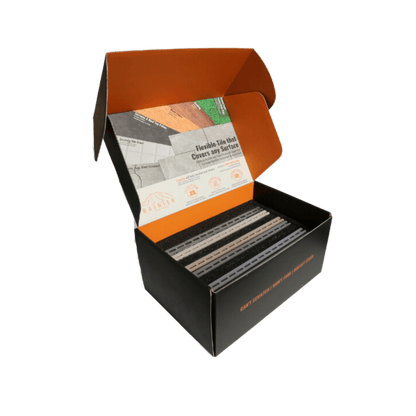Paver stones enhance outdoor spaces with their durability, aesthetic appeal, and functionality. However, to maintain their beauty and longevity, a protective coating is essential. This guide explains when and how to coat paver stones, detailing the process, best practices, and benefits.
Read more: how to install paving stones in grass
Why Coat Paver Stones?
Applying a sealer to paver stones offers several benefits:
-
Protection Against Stains – Prevents oil, dirt, and spills from seeping into the stone.
-
Weather Resistance – Shields against rain, snow, and UV rays, reducing fading and erosion.
-
Enhanced Appearance – Deepens color and provides a glossy or matte finish, depending on the chosen sealant.
-
Weed and Moss Prevention – Reduces weed growth and discourages moss from forming in joints.
-
Easier Maintenance – Sealed pavers require less frequent cleaning and prevent deterioration.
Read more: how to paint paving stones
When to Coat Paver Stones?
1. Timing for Initial Sealing
-
New Paver Installation – Wait at least 30–60 days after installation to allow for settling and efflorescence (white chalky deposits) to surface.
-
Concrete Pavers – Generally, sealing can be done after four weeks to let moisture fully escape.
-
Clay Brick Pavers – These can be sealed sooner since they absorb less moisture.
2. Seasonal Considerations
The best time to seal pavers depends on climate conditions:
|
Season |
Ideal for Sealing? |
Reason |
|
Spring |
Yes (Late Spring) |
Dry weather, moderate temperatures. |
|
Summer |
Yes (Early Summer) |
Warm and dry, but avoid extreme heat. |
|
Fall |
Yes (Early Fall) |
Cool temperatures, low humidity. |
|
Winter |
No |
Cold and moisture hinder proper sealing. |
3. Signs That Pavers Need Resealing
-
Water Absorption – If water soaks in rather than beading on the surface, the old sealer has worn off.
-
Fading Colors – UV exposure causes pavers to lose their vibrant hues.
-
Stains or Oil Spots – Increased staining means the protective layer is compromised.
-
Weed Growth Between Joints – Indicates that joint stabilization has weakened.
-
Pavers Feel Rough or Dry – A sign that the previous coat has degraded.
Most paver sealants last between 2 to 5 years, depending on climate and foot traffic
Read more: How to lay paving stones
How to Coat Paver Stones: Step-by-Step Process
1. Gather the Necessary Materials
-
Sealer (water-based or solvent-based)
-
Pressure washer or garden hose
-
Mild detergent or paver cleaner
-
Broom or leaf blower
-
Paint roller or sprayer
-
Polymeric sand (if needed)
-
Safety gear – gloves, mask, and protective eyewear
2. Clean the Pavers Thoroughly
-
Remove Debris – Sweep or use a leaf blower to clear dirt and leaves.
-
Wash the Surface – Use a pressure washer or hose to remove built-up grime.
-
Apply Cleaner (if needed) – For tough stains, apply a mild detergent and scrub with a brush.
-
Let the Pavers Dry Completely – This usually takes 24-48 hours; sealing over wet pavers traps moisture and causes hazing.
3. Reapply Joint Sand (If Needed)
-
Check Joint Stability – If gaps have formed between pavers, refill them with polymeric sand.
-
Sweep the Sand In – Use a push broom to spread it evenly into the joints.
-
Compact the Sand – Lightly mist with water to activate the binding properties.
4. Choose the Right Sealer
|
Type of Sealer |
Finish |
Best For |
|
Water-Based Sealer |
Matte or low-gloss |
Eco-friendly, dries quickly, easy to apply. |
|
Solvent-Based Sealer |
Glossy or wet-look |
Enhances colors, lasts longer, more durable. |
-
Matte Finish – Ideal for a natural look.
-
Wet-Look Finish – Enhances color vibrancy and provides a glossy effect.
5. Apply the Sealer
-
Select an Application Method
-
Sprayer – Best for even coverage and large areas.
-
Paint Roller – Provides control and avoids overspray.
-
Apply the First Coat – Work in sections, applying a thin and even layer.
-
Let It Dry – Allow 24 hours before applying a second coat (if needed).
-
Apply the Second Coat (if necessary) – For added protection, apply a second thin layer.
Read more: How to Remove Rust from Paver Stones
6. Allow Proper Drying Time
-
Avoid Foot Traffic – Keep the area clear for at least 24-48 hours.
-
No Heavy Objects – Wait 72 hours before placing furniture or driving on sealed pavers.
-
Monitor for Proper Curing – Full curing can take up to 7 days.
Common Mistakes to Avoid
-
Sealing Too Soon – Traps moisture and causes a hazy appearance.
-
Applying Too Much Sealer – Leads to a sticky, uneven finish.
-
Not Cleaning Pavers Properly – Dirt and stains will be locked in under the sealer.
-
Skipping the Drying Step – Moisture under the sealer can cause bubbling and discoloration.
-
Using the Wrong Sealer – Not all sealers work on every paver type; check manufacturer recommendations.
Read more: how to build stairs with paver stones
Maintaining Sealed Pavers
To extend the life of your paver sealant:
-
Clean Regularly – Sweep and rinse every few weeks to prevent buildup.
-
Spot Treat Stains Quickly – Use mild soap and water to remove spills before they set in.
-
Avoid Harsh Chemicals – Acid-based cleaners can degrade the sealant.
-
Reseal When Needed – Check every 2-3 years to determine if a new coat is necessary.
Coating paver stones is an essential step in preserving their appearance and durability. Choosing the right time and method ensures long-lasting protection and a professional finish. By following this guide, you can keep your outdoor space looking pristine while preventing damage from weather, stains, and wear.
Would you like recommendations on the best sealer brands for your specific paver type? Let me know how I can assist!






